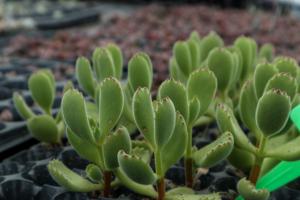When to Plant Tall Fescue
Tall fescue is a cool-season grass commonly used for lawns, pastures, and landscapes. It is an easy-to-grow and hardy grass that can handle a variety of soil types and environmental conditions. However, planting at the right time is crucial to ensure optimal establishment and growth. In this article, we will discuss when to plant tall fescue and the factors that can affect its growth.
Factors Affecting Tall Fescue Growth
Before discussing the best time to plant tall fescue, it is important to understand the factors that can affect its growth. These factors include soil temperature, moisture, and sunlight. Soil temperature is one of the most important factors as it influences seed germination and establishment. Tall fescue seeds germinate best when soil temperatures are between 50掳F and 65掳F. Moisture is also critical for growth, as seeds require consistent moisture levels to sprout and establish. Lastly, sunlight is essential for photosynthesis and overall plant health.
Planting Time for Tall Fescue
The best time to plant tall fescue is in the fall, typically from mid-August to mid-October. Planting during this time allows for optimal seed germination and establishment before the onset of winter. The cooler temperatures and higher moisture levels during the fall create optimal conditions for the seeds to grow. Additionally, planting in the fall allows the tall fescue to establish a strong root system before the warmer temperatures of summer arrive.
Other Considerations
In addition to planting at the right time, there are other considerations to ensure the success of tall fescue growth. One important consideration is soil preparation. The soil should be well-drained, free from weeds, and tilled to a depth of 4 to 6 inches. Before planting, you should also consider using a soil test to determine the soil's pH level and nutrient content. Adjusting the pH and adding any necessary nutrients can improve the soil's suitability for tall fescue growth.
Another consideration for tall fescue growth is adequate watering. Newly planted seeds require regular watering to maintain consistent moisture levels. Once established, tall fescue requires 1 to 1.5 inches of water per week to maintain healthy growth. Fertilization is also important, with recommended fertilization rates varying based on location and soil conditions.
Conclusion
Tall fescue is an attractive and hardy grass ideal for lawns, pastures, and landscapes. Planting at the right time and ensuring proper soil preparation, watering, and fertilization are crucial to its successful establishment and growth. By planting tall fescue in the fall and providing the necessary care, you can enjoy a lush and healthy lawn or pasture year-round.

 how many times do yo...
how many times do yo... how many planted tre...
how many planted tre... how many pine trees ...
how many pine trees ... how many pecan trees...
how many pecan trees... how many plants comp...
how many plants comp... how many plants can ...
how many plants can ... how many plants and ...
how many plants and ... how many pepper plan...
how many pepper plan...
































